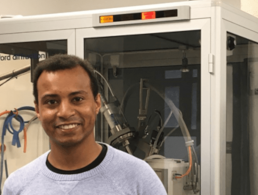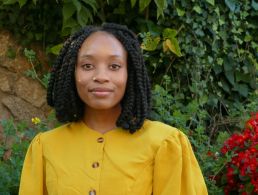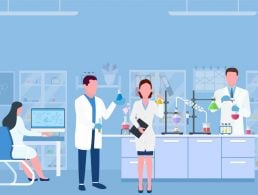The prescription drugs that we take when we’re sick didn’t come out of nowhere. They were created following painstaking research. But how can that process be sped up?
Sarah Hudson, a lecturer and researcher at University of Limerick (UL), is leading a team of researchers to develop processes that could make the creation of pharmaceutical products faster and cheaper, and the drugs themselves more effective.
What is your role within UL?
I’m a lecturer in chemistry, and a researcher.
What steps led you to the role you have now?
I attained a PhD in chemistry and held postdoctoral research positions in Massachusetts Institute of Technology (MIT) and Waterford Institute of Technology.
Can you tell us about the research you’re currently working on?
When you read the literature, you can see that people are discovering many new exciting molecules – many of them natural molecules from plants and cells – which show activity against 21st-century problematic diseases. However, it takes a long time and is very expensive to develop these molecules into medicines. Often, at late stages of development, they don’t work and their potential is lost.
I work at trying to design new ways to ‘package’ these potential cures so that they do work when they are made into a medicine. Currently, we are focusing on trying to improve the stability and activity of antimicrobial molecules to treat multi-resistant microbial infections. The molecules we look at range from small to large peptides, and we design new solid and liquid forms of these molecules to try to improve how they behave during storage and in the body.
What first stirred your interest in this area?
I originally studied chemistry in Trinity College Dublin but, during my PhD, I began to look at using enzymes for doing chemistry. I was fascinated at how versatile they were.
When I was doing research in Prof Robert Langer’s lab at MIT, which focused on developing novel therapies to treat disease, I really saw how a multidisciplinary problem-solving approach – combining physics, chemistry, biology and engineering – with potential cures for diseases could enable the potential of a therapeutic molecule.
If there is such a thing, can you describe a typical day for you?
It is genuinely difficult to describe a typical day, but if I look at a day during term time, I get into work just after 9am, after dropping the kids to school and crèche. I usually touch base immediately with my research team – currently one postdoctoral researcher and several PhD students – and find out if there are any big issues in the lab at the moment, or if anyone is stuck on anything. Then I usually open up my email and work out what I need to do that day.
From then on, I could be lecturing for around two hours to undergraduate students, meeting with final-year students who are doing a research project in my lab, trying to snatch an hour or two of quiet time to finish writing or reading a paper or a grant application, and then, in between all that, dealing with purchasing or servicing lab equipment, health and safety issues, redesigning undergraduate or postgraduate courses, or answering queries from students by email.
Unfortunately, I rarely get into the lab during term time to do any lab work myself, but I do try to do that during the summer – it is the bit of the job I miss the most since becoming a lecturer.
What skills and tools do you use on a daily basis?
Data interpretation and writing are a huge part of my job on a daily basis.
Trying to stay on top of the literature and technical developments in my area is a relentless challenge, but it is also what keeps the job interesting.
I also have to pitch my ideas and results regularly to my colleagues, and at meetings and conferences, so presentation skills are very important.
What applications do you foresee for this research?
The obvious application for this research is in the development of medicines, but biomolecules – as we describe many of the molecules we work with – have a lot of potential as fragrances, nutraceuticals, biocatalysts, sensors, etc, so if we can understand how they behave and how to control their stability and activity, the range of applications is infinite.
Are there any common misconceptions about this area of research?
The most common misconception is the amount of time it takes to bring a molecule that shows potential for curing a disease from the point of discovery to the market. It takes a long time and is very expensive, but that is why I am interested in doing this work. If we can design strategies to shorten this time and reduce costs, more potential treatments will be available to people. I think showing people the number of failures in pre-clinical and clinical trials helps get this point across, and we try to do this during outreach activities in schools and at public events.
When you first started work as a researcher, what were you most surprised to learn was important in the role?
The amount of administration involved in both the research and the teaching roles!
What do you enjoy most about your career in research?
Talking to the postdocs, PhD students and final-year students about their experiments and ideas for their projects – it is what keeps me excited about science and the work we are trying to do.




